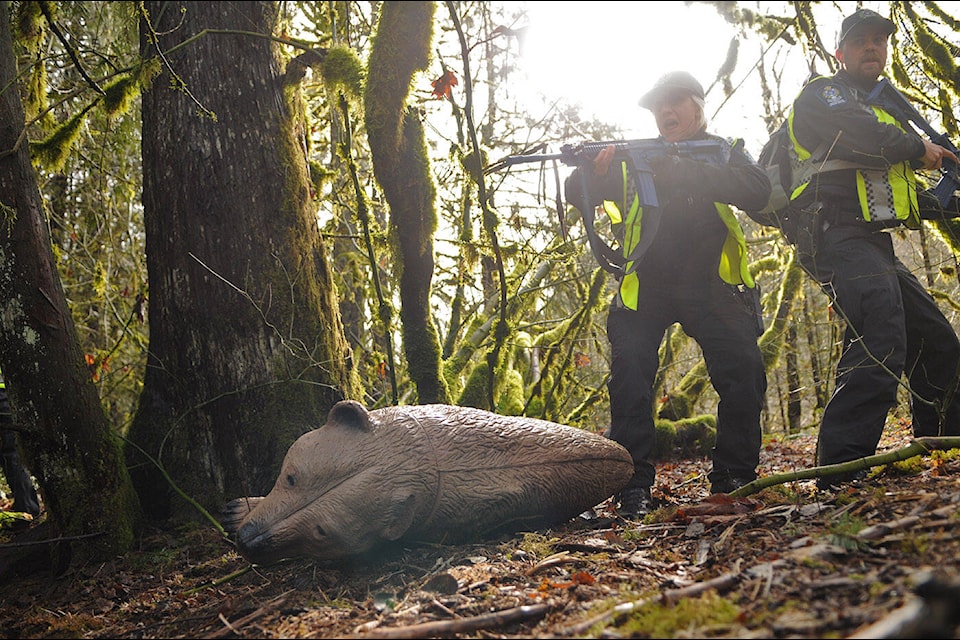B.C. conservation officers were in Chilliwack last week training for rare but highly dangerous scenarios involving fatal predator attacks.
And although the last time someone in B.C. was killed by a wild animal was in 2015 by a black bear, the officers want to be prepared for the worst-case scenario.
“This is a reality-based type of training where we try to put our officers into the same situations that they’re faced with in a real actual response,†said Insp. Kevin van Damme with B.C. Conservation Officer Service (BCCOS).
About 30 BCCOS officers took the five-day Predator Attack Team training in response to simulated wildlife attacks.
“They are extremely rare, these types of attacks. But when they do occur, we want our officers to be ready both mentally and physically,†van Damme said.
The officers being trained, along with about 10 instructors and a handful of role-players, were at the Chilliwack River Hatchery on Thursday, March 3 taking part in eight different scenarios. Each team of three or four officers was assigned to just one of the eight mock situations which they tackled for two days.
Black Press Media followed one team during their scenario which was the highest risk, and also the most rare. The conservation officers were only given a small amount of info before heading into the situation. They were told that two men went fishing when they were attacked by an animal. One man ran off to get help and said that his partner was still missing.
When the four officers arrived to search for the missing man, they were approached by his daughter who was frantically pacing about the area alongside a member of the media wanting to know what was happening. The conservation officers had to try and calm her down and deal with the media all while preparing to head into the wooded area, not knowing what they would find.
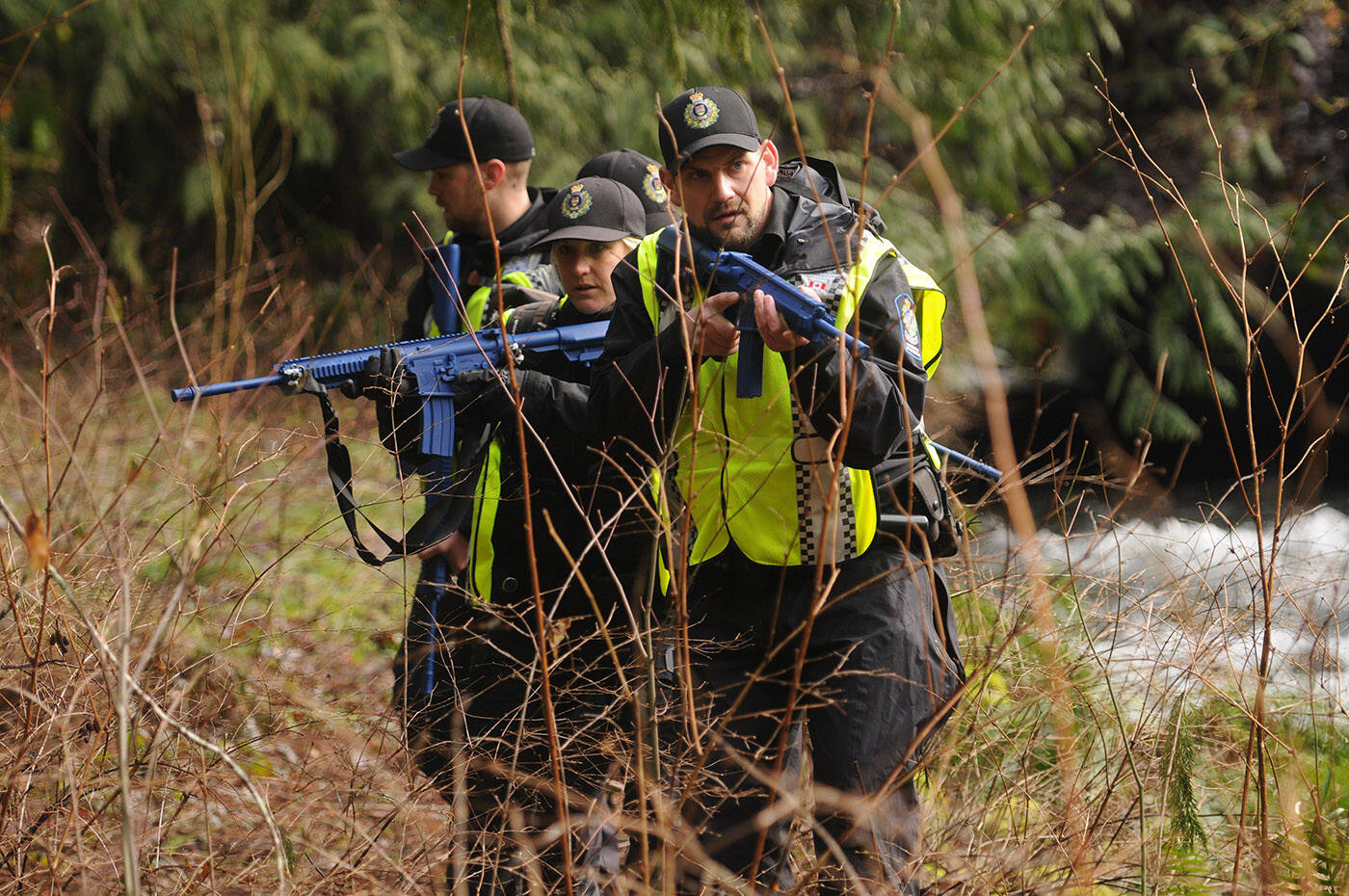
Van Damme and another instructor watched as the team stepped into the woods armed with blue replica rifles. First, they performed a safety sweep as they moved slowly in a tactical diamond formation along the edge of a creek. They shouted the missing man’s name and constantly communicated with each other in loud voices confirming which way they’re stepping and what they saw every step of the way: a backpack, clothing, a bloody knife.
Earlier, the instructors had strewn these pieces of evidence throughout the scene. Long marks in the soft earth showed that something, or someone, had been dragged through the area.
The instructors would throw questions at the team in the middle of the scenario and toss in other distractions like the missing man’s daughter rushing back into the scene shouting for her father.
“We want to keep the threat alive, keep the team on their toes right through the whole scenario,†van Damme said. “Sometimes, if they drop their guard, I’m going to suit up (in a bear suit) and go behind a tree.â€
Eventually, the conservation officers pieced together it all together. They found the victim, deceased. They identified that the predator was a grizzly bear and it was stabbed with a knife when it attacked the fishermen. The injured and angry bear was still out there.
“The most dangerous thing we respond to is a wounded grizzly bear,†van Damme said.
Their next job was to figure out the best way to capture the grizzly.
“(In real life) we’ll hold them and do DNA and we wouldn’t put them down unless we confirmed or matched that as the offending animal.â€
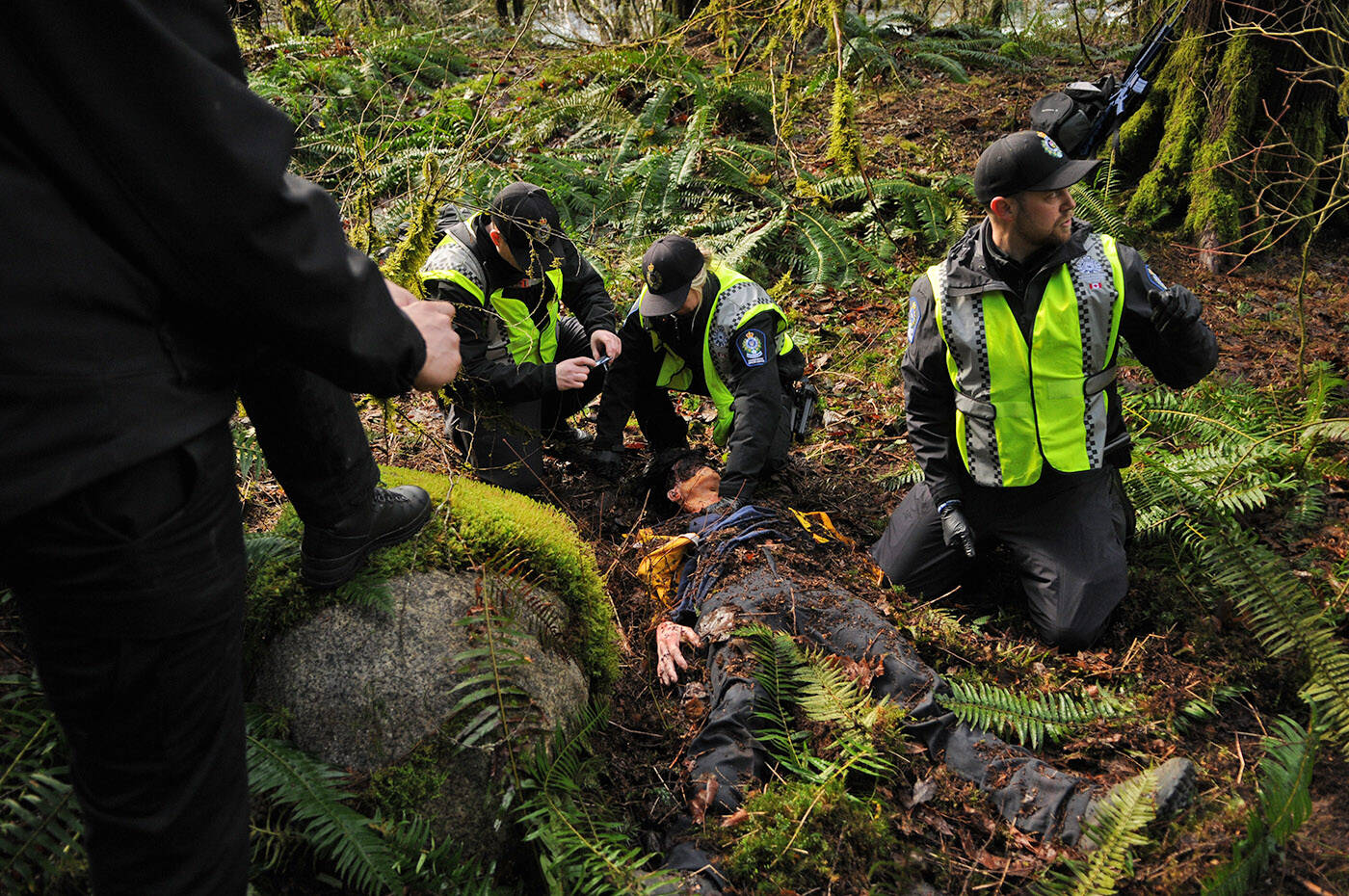
In another scenario, four different conservation officers also had little info to start with. A 12-year-old boy was horseback riding with his mother along the river when an animal attacked them. The horses fled and the boy ran to get help. The team entered the scene and later find the mother dead after being attacked by a cougar.
The scenes are as realistic as possible. A mold of a cougar paw was used to make track impressions in the sand along the Chilliwack River. To make the mannequins even more lifelike, BCCOS added bite wounds, claw marks and even exposed bones to them.
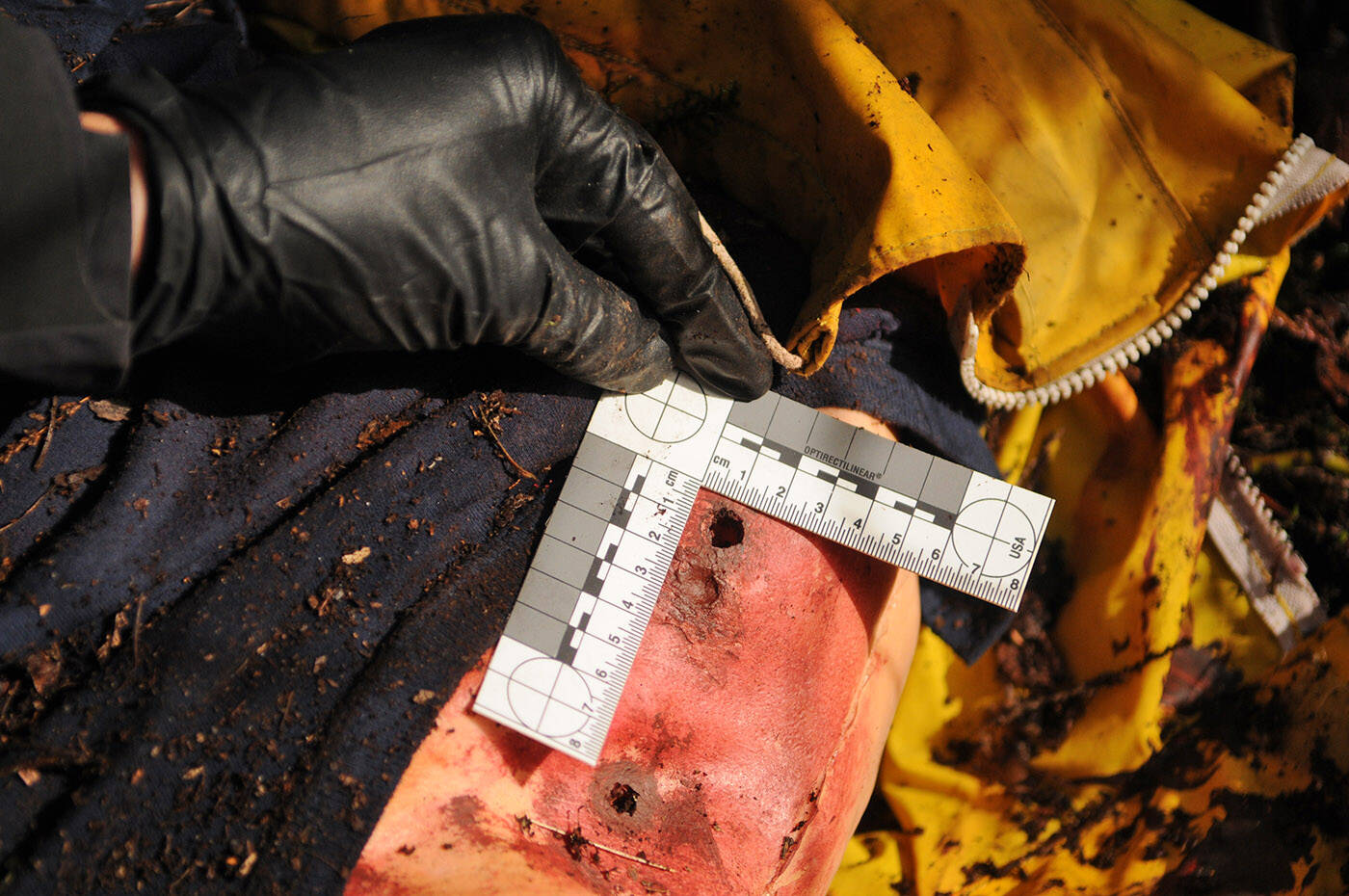
“We’re trying to replicate the situations that officers get faced with.â€
They also make use of dead animals for training purposes. In one of the scenarios, a real cougar that was hit and killed by a vehicle in B.C. and picked up by BCCOS was used as part of the scene. Later, they did a full necropsy on the cougar.
“Any time we obtain these animals, any time we get an opportunity to learn from this, it’s not lost. We’ll benefit from it,†said instructor Jared Connatty.
BCCOS has 160 officers. About 100 have taken the Predator Attack Team training over the years, and eventually all of them will be trained.
The week-long training included classroom lessons, forensics, taking DNA samples, photographing the scene and, on the last day, being in the morgue with the victim linking everything together.
As realistic and gruesome as the scenarios are, the training is working, van Damme said.
“This is a very traumatic situation for our officers. What I’ve heard from a number of officers after taking this training is when they got the call (in real life) it was exactly like they did their training.
“It prepares them mentally and it also kind of takes the edge off,†he added. “That’s why we train and practise because we want everyone to go home safe.â€
RELATED:
RELATED:
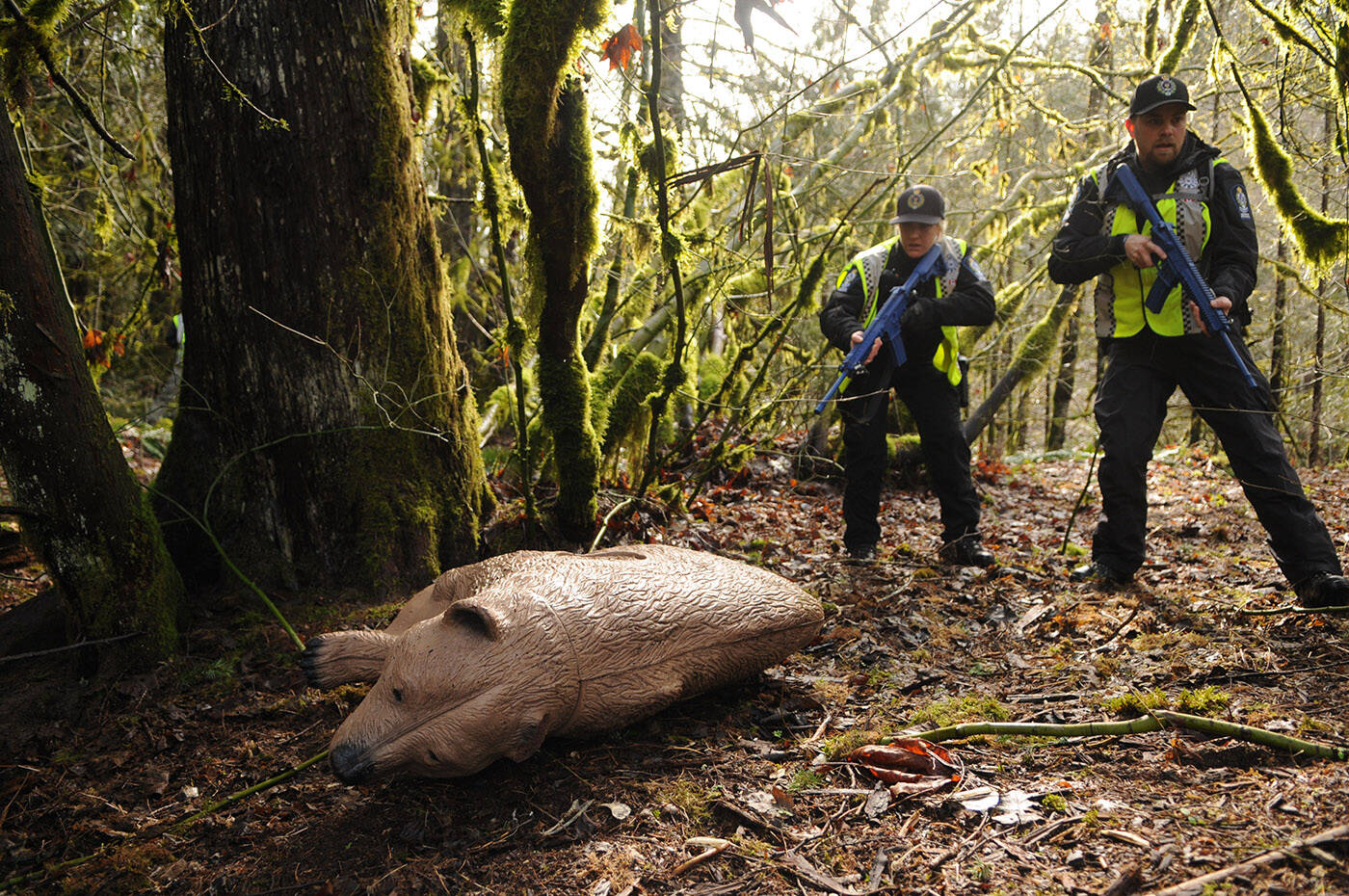
Do you have something to add to this story, or something else we should report on?
Email: jenna.hauck@theprogress.com
Twitter:
Like us on and follow us on .
